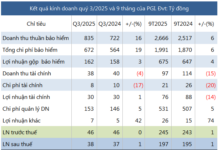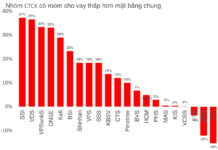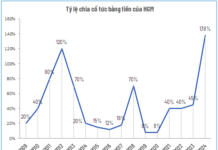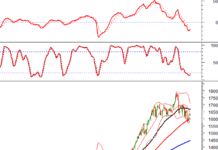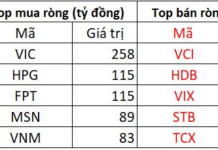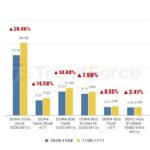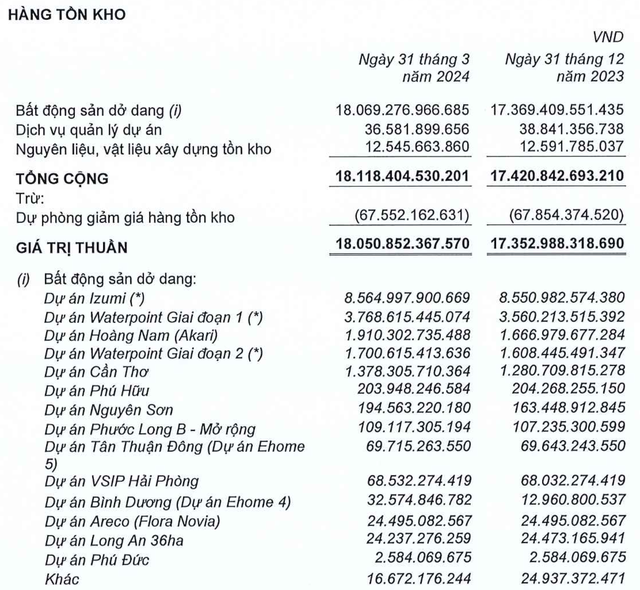Continuously Acquiring Prime Locations
Recently, the Rạn Biển Restaurant chain leased the land plot at 2-4-6 Hai Bà Trưng, Saigon Ward, and is currently in the process of construction and site preparation. This prime location in the heart of Ho Chi Minh City boasts four frontage sides.
The acquisition of this over 6,000 m² prime location by the aforementioned restaurant chain has sparked widespread discussion. In such prime locations, rental costs can soar to billions of dong per month.
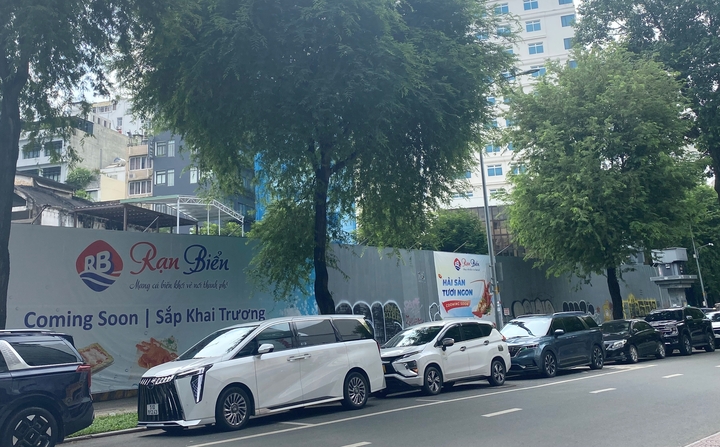
The four-frontage site in central Ho Chi Minh City recently leased by the Rạn Biển restaurant chain. (Photo: Đại Việt)
Despite economic challenges and fluctuations, prime locations with high rental prices remain sought after by F&B brands.
A notable example is the 11-13 Hàn Thuyên location, with a usable area of 210 m², which the landlord listed at 750 million dong per month. After being vacant for 8 months, Adoré – World Coffee decided to lease it for business operations.
Previously, this location was occupied by Starbucks. However, due to disagreements over the new rental price, the American coffee brand had to vacate.
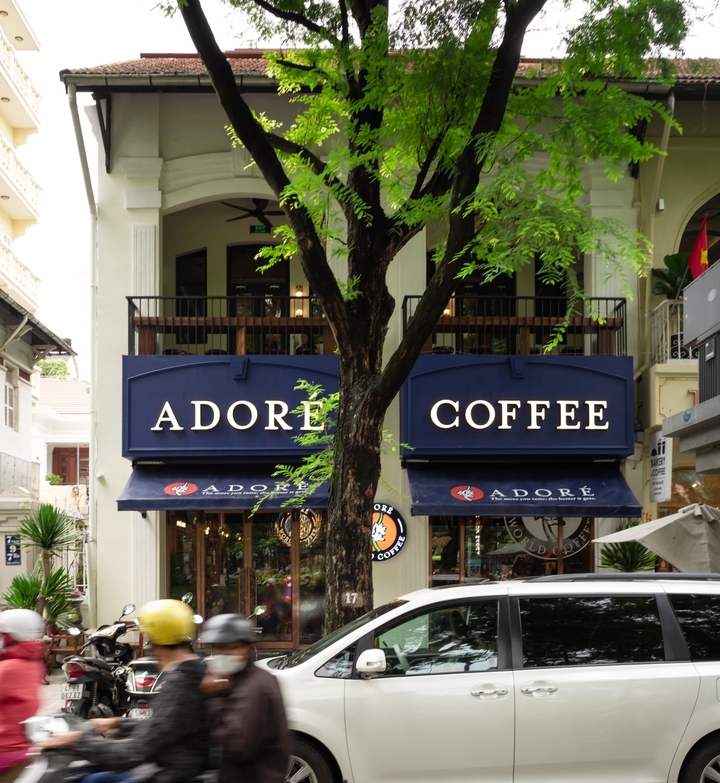
The Hàn Thuyên site, once listed at 750 million dong per month, has found a new tenant. (Photo: Đại Việt)
The 2-2A Trần Hưng Đạo site is also undergoing rapid construction in preparation for McDonald’s return in the near future. This location housed the brand for 10 years (from 2014) until the store closed in September 2024 due to lease expiration. After a year-long hiatus, McDonald’s began renovations in September 2025 to resume operations.
The 2 Đồng Khởi site, located at the intersection of Đồng Khởi and Ngô Đức Kế, is also being renovated by Casa Cafe for a late October opening. This prime location spans 800 m², and real estate agents reveal that the rental price is no less than 1 billion dong per month.

The 2 Đồng Khởi site at the intersection of Đồng Khởi and Ngô Đức Kế, recently leased by Casa Cafe. (Photo: Đại Việt)
Facing Declining Purchasing Power and High Rental Costs
While the F&B industry continues to secure prime locations, not all brands manage to survive.
Kissho Restaurant at 14 Nguyễn Huệ, once known as the largest Japanese restaurant in Ho Chi Minh City with a 1,000 m² space in the city center, has been closed for over two years due to operational difficulties. To date, the 14 Nguyễn Huệ site remains vacant and without a new tenant.
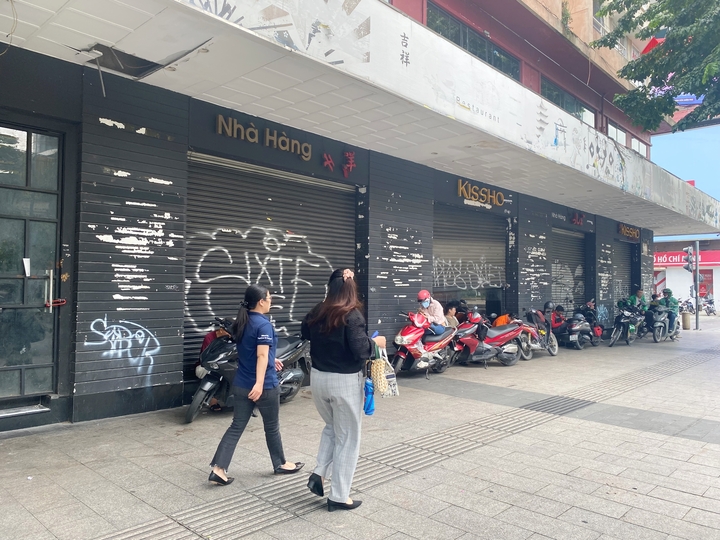
Kissho Japanese Restaurant, located in the prime Nguyễn Huệ area, has ceased operations. (Photo: Đại Việt)
Recently, the Monkey in Black coffee brand closed its last store on Sư Vạn Hạnh Street, Hòa Hưng Ward, after 10 years of operation. Trần Thanh Tùng, the brand’s founder, admitted that high rental costs and thin profit margins could not offset the risks. Currently, the F&B sector faces numerous challenges, and he has no plans to re-enter the industry.
Nguyễn Nhật Nam, owner of a high-end restaurant near the Nguyễn Huệ pedestrian street, shared that he leases a space with a total floor area of nearly 900 m². Monthly rental costs amount to 750 million dong.
According to Nam, economic difficulties have significantly reduced customer numbers. Meanwhile, high rental costs show no signs of decreasing. Consequently, his restaurant has had to reduce staff to maintain operations.
“The restaurant’s workforce has been cut by 50% compared to a few years ago. This is a necessary measure during this challenging period,” Nam stated.
Nam explained that rising input costs, increasing rental prices, and unchanged selling prices—due to fears of customer backlash—have forced the restaurant to reduce staff, despite not wanting employees to lose their jobs.
Nam emphasized that staff reductions and operational efficiency improvements are essential for survival in the food service industry amid ongoing economic challenges.
Lê Thái Hoàng, owner of a 32-branch restaurant chain in Ho Chi Minh City, Hanoi, and Da Nang, noted that rental prices in Ho Chi Minh City and Hanoi have risen by 5-15% over the past few years, particularly in central areas. In suburban areas with high population densities, rental prices have increased by 10-15%.
Hoàng advised F&B brands to optimize leased spaces, reduce area sizes, and focus on boosting online sales to improve revenue and profits.
Hoàng also highlighted that in the F&B industry, three cost categories require close monitoring: rental, labor, and material costs. These typically account for 65-75% of revenue, depending on the business model and location. Therefore, actual profit margins face significant pressure from these costs, especially rental expenses. Effective management and optimization of every square meter of space are crucial for profitability.
Trần Thăng Long, an economist in Ho Chi Minh City, noted that while the F&B industry remains promising, it faces numerous challenges. Escalating rental costs force many major brands to abandon prime locations as profits fail to cover expenses. Additionally, fluctuating material and labor costs strain operations, while customers remain price-sensitive.
“The market also witnesses fierce competition as new brands emerge, and easily replicated menus blur distinctions,” Long remarked.
Long predicted that the F&B industry’s growth rate would slow in 2025, significantly lower than the “hot growth” phase of 2024. This demands higher standards in management, cost optimization, and long-term strategy development, rather than relying on natural growth in purchasing power.
According to iPOS research, Vietnamese consumers are significantly reducing spending on beverages over 50,000 dong. Nearly 84% opt for drinks under 50,000 dong. High-end and luxury dining services have seen a sharp decline in users.
In the F&B sector, only about 15% of businesses report revenue increases, while over 85% face pressure from rising material, labor, and rental costs.
In central Ho Chi Minh City, many major brands pay 350-500 million dong per month for a 100 m² space, with revenues ranging from 1.2 to 1.8 billion dong. Actual profit margins often hover around 10% or lower.
The market also sees shifts in consumer behavior. Customers prioritize “real value”—quality food and drinks at reasonable prices over luxury. New models like franchising, compact kiosks, cloud kitchens, and delivery services are booming, helping businesses reduce costs and reach consumers faster.
However, growth in 2025 is expected to slow compared to 2024. Experts believe the F&B industry can no longer rely on luck or rapid growth but must focus on operational refinement, suitable business models, and long-term strategies.
iPOS forecasts that Vietnam’s F&B industry revenue will reach 755 trillion dong in 2025, with growth slowing to around 9.6%, lower than in 2024. The market is expected to add 10,000 new F&B outlets, reaching a total of 331,369.
Notably, under pressure from rising material, rental, and labor costs, 2025 may see price increases, especially among industry leaders.
Nearly 50% of F&B businesses plan to raise prices in 2025, with 53% of those operating six or more outlets intending to do so.
Ho Chi Minh City to Gain Nearly 1,100 Hectares for Real Estate Projects
Seventy-four land plots, spanning a total area of approximately 1,079 hectares, have been proposed by the Department of Agriculture and Environment to the Ho Chi Minh City People’s Committee for a pilot commercial housing project. This initiative aligns with Resolution 171/2024 issued by the National Assembly.
Post-Merger with Ho Chi Minh City: The Surge in Binh Duong (Former) Apartment Prices Fueled by Satellite City Population Relocation Strategy
Following the merger, the newly expanded Ho Chi Minh City has unlocked vast development potential, emerging as a cutting-edge megacity and a powerhouse for finance, manufacturing, logistics, and innovation. This transformation maximizes the natural, geographic, and infrastructural advantages of all three localities.
Ho Chi Minh City: Industrial Zone Workforce Continues to Grow, No Mass Exodus to Rural Areas
At a press conference addressing socio-economic issues on the afternoon of September 25th, Ms. Nguyễn Võ Minh Thư, Deputy Head of the Ho Chi Minh City Export Processing and Industrial Zones Authority (HEPZA), provided insights into the labor situation within the city’s export processing and industrial zones (EPZs-IZs). This update comes amid concerns that many workers are leaving the city to return to their hometowns for employment opportunities.











